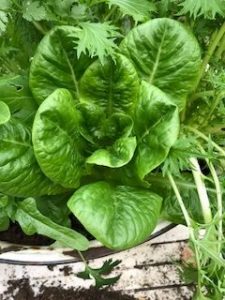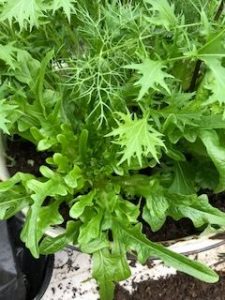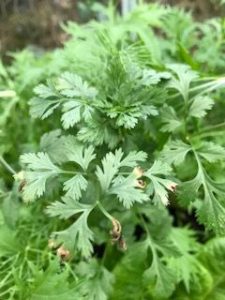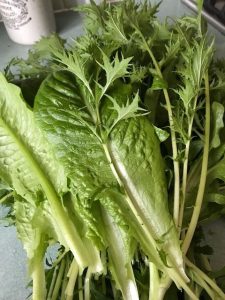If you build it, they will come part 3
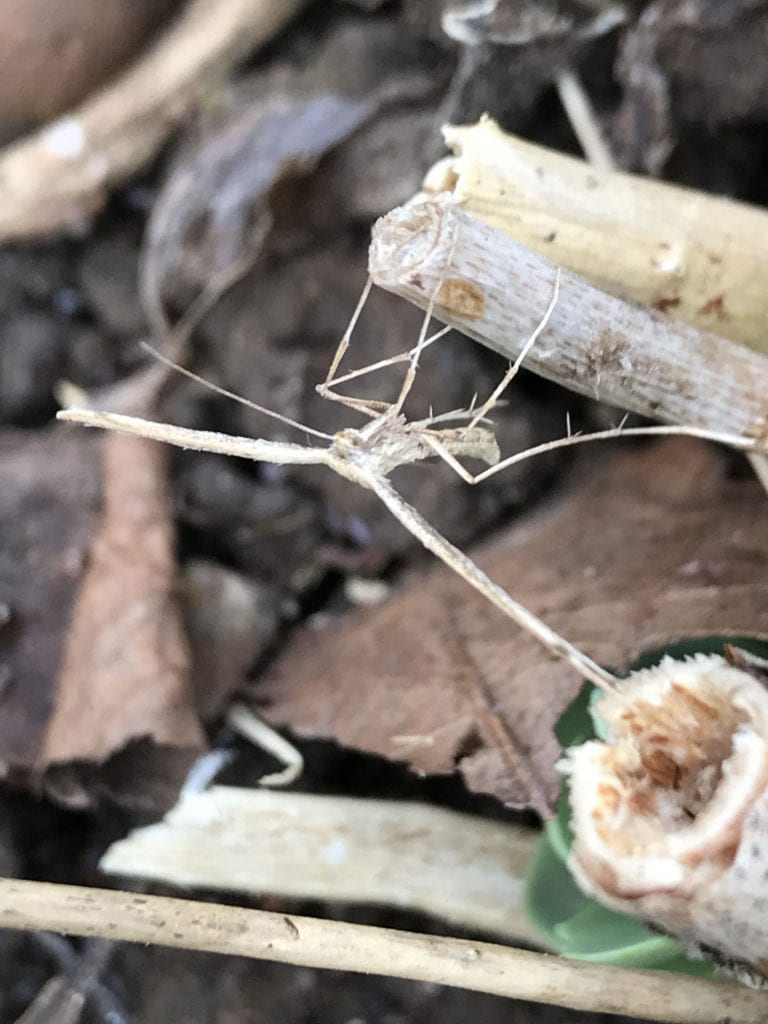
The Brownfield Site bed has now been emptied. It had about 8 Hylotelephium, probably Autumn Joy, in it which insects love. In late Summer it was covered in bees, hoverflies and wasps and if I could only have 5 plants for insects this is one that I would choose to keep. The other 4 would be Skimmia japonica, Cotoneaster horizontalis, Echium vulgare and Solidago. This meant that I didn’t want to get rid of them, just divide and move them so now we have them grouped all over the garden in the Thugs Bed and there is plenty to give away to the rest of the allotment site. You can read part 1 and part 2 of this series to find out what my ultimate aim is.
Whilst I was working on the hylotelephia (is that how you do the plural?), I disturbed a common plume moth. I have seen them before on the site and they are quite distinctive with those small wings. They look a bit like a miniature stick insect.
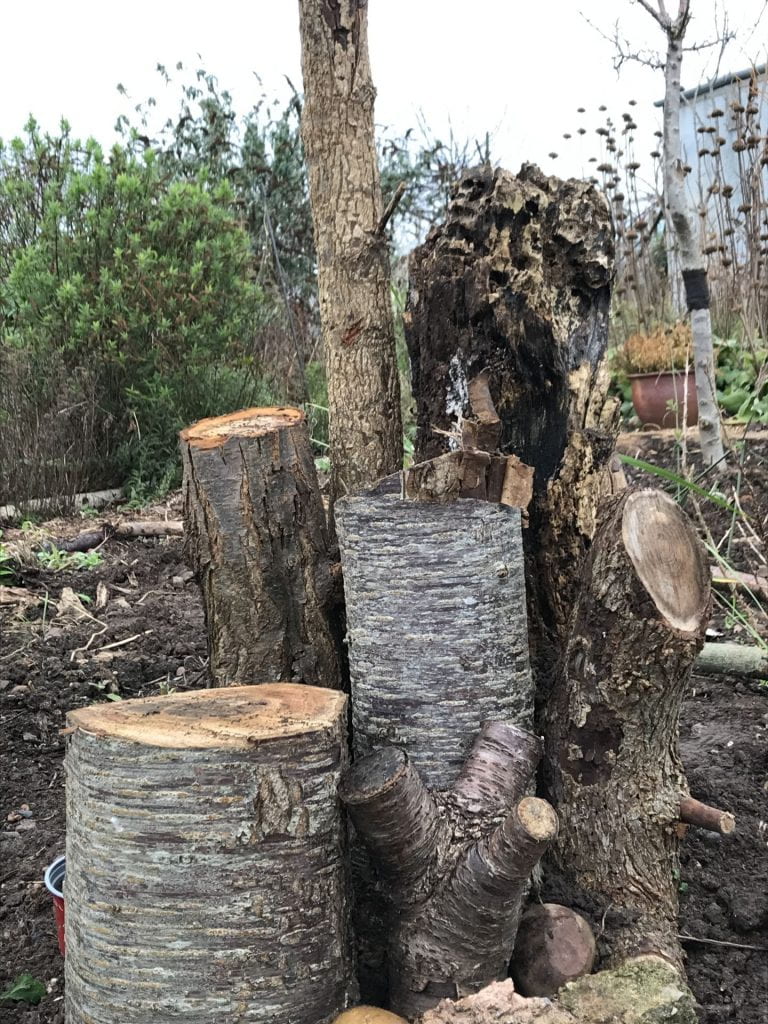
The first thing I wanted to build was a log pile on end. I only needed 4 or 5 fairly sturdy logs which I have after we had some tree cutting on the site last spring. I dug a round hole, stood them on end and then moved the soil back to bury them.
The log at the back had been lying down on the bed for a couple of years I would say, so I stood that up as well because it will have a lot of the sort of life that we want in it already and it will mean that the wildlife we want in this area is already here.
At the bottom of the picture you might just be able to see some stones and concrete rubble. I am making a river of these from the log pile to the edge of the bed, which is south facing, so that invertebrates now have 3 types of habitat in close proximity – wood pile to live in, stones to live under and to bask on in the sun and some bits of bare soil around them. This is all part of building the structural complexity and diversity that invertebrates need. Round, water-shaped stones are something we have a lot of in our soil so it shouldn’t take me too long to complete that part.
The plants in this bed are all going to be yellow and white so I have a Libertia grandiflora to plant behind the pile – in my garden they are in almost full-time shade and at the side a bushy honeysuckle I nipped a cutting off on my morning walk. The flowers are yellow and white and heavily scented so will be delicious. I am planting it in the shade of the logs and hope that it is not too sunny for it. If it is, I will move it.
It is a start. What projects are you working on?
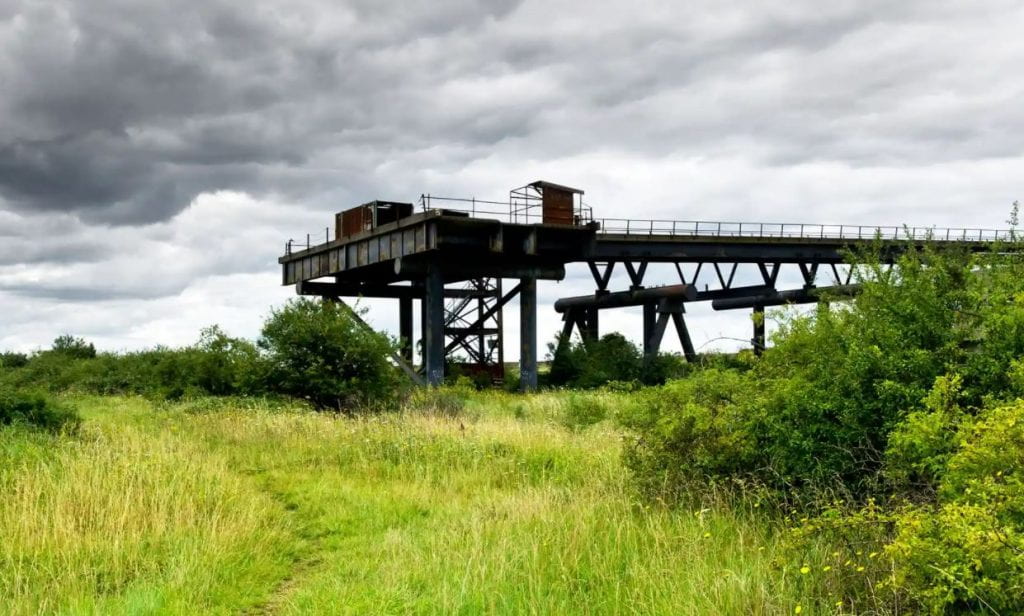

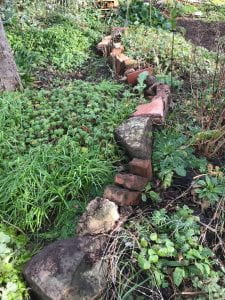 My first idea is to build a dry rubble wall that snakes through the Thugs Bed. I did start to build it at the front of the bed but then had a nightmare about children falling on it and cutting themselves open – easily done as it has sharp edges. So, after much thought I have moved it into the bed where it will probably be much more suited to the bugs. The bed faces south so the wall should warm up in the sun and critters can sun themselves on it. It’s not really warm enough at the moment but it will be.
My first idea is to build a dry rubble wall that snakes through the Thugs Bed. I did start to build it at the front of the bed but then had a nightmare about children falling on it and cutting themselves open – easily done as it has sharp edges. So, after much thought I have moved it into the bed where it will probably be much more suited to the bugs. The bed faces south so the wall should warm up in the sun and critters can sun themselves on it. It’s not really warm enough at the moment but it will be.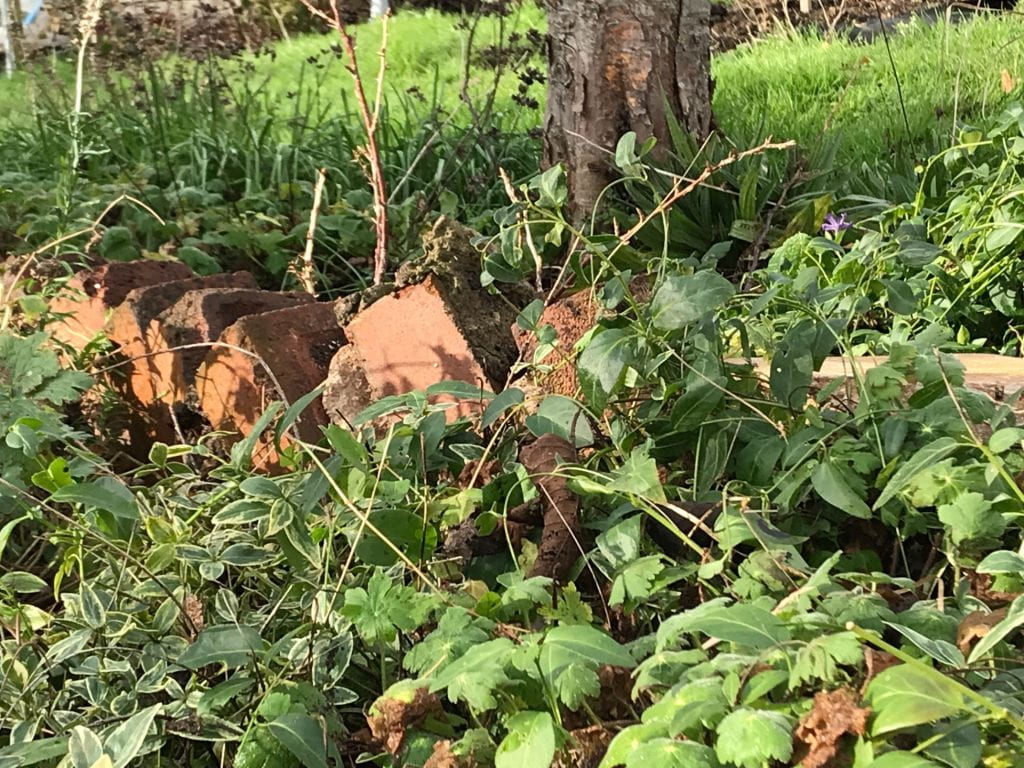
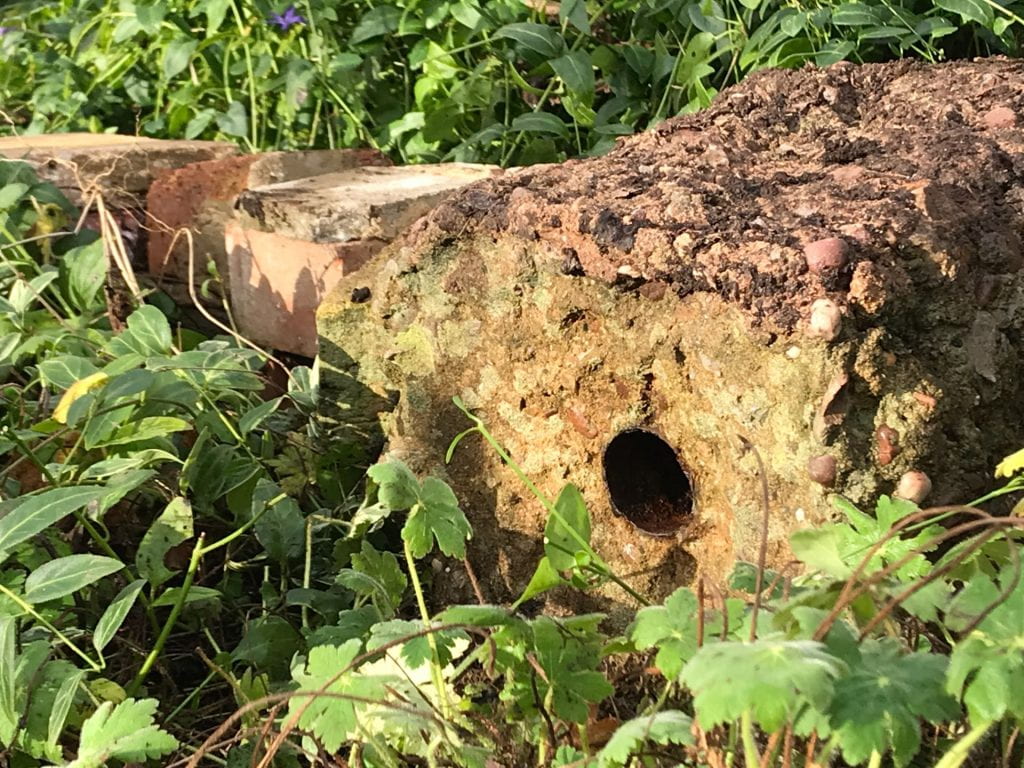
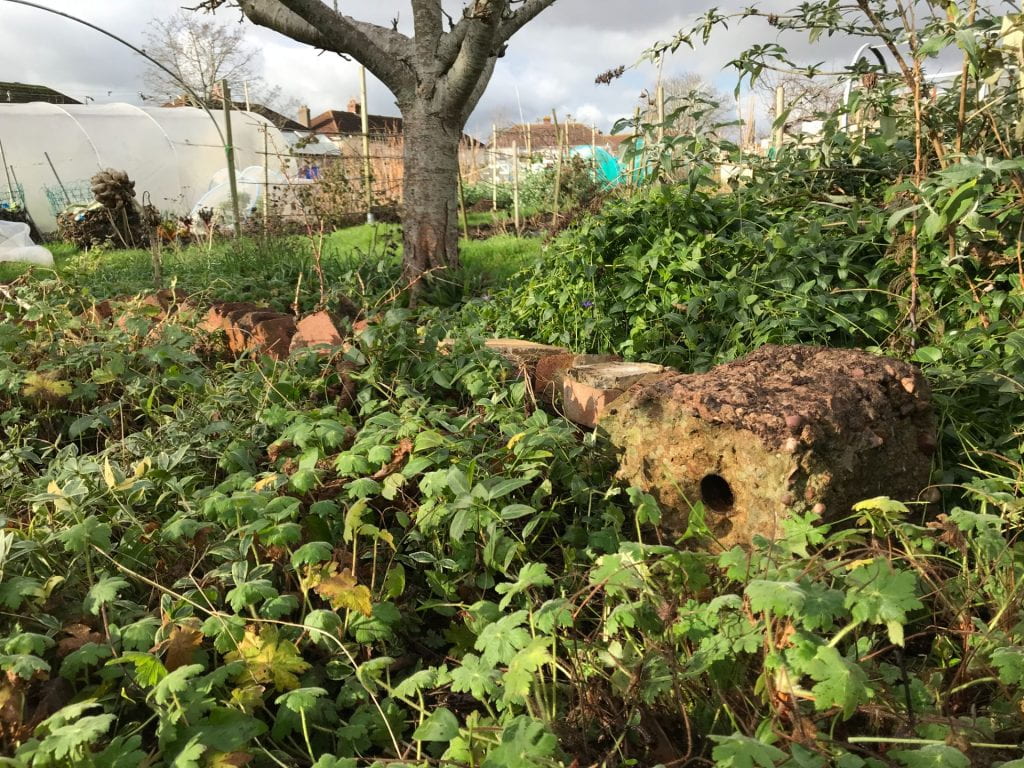
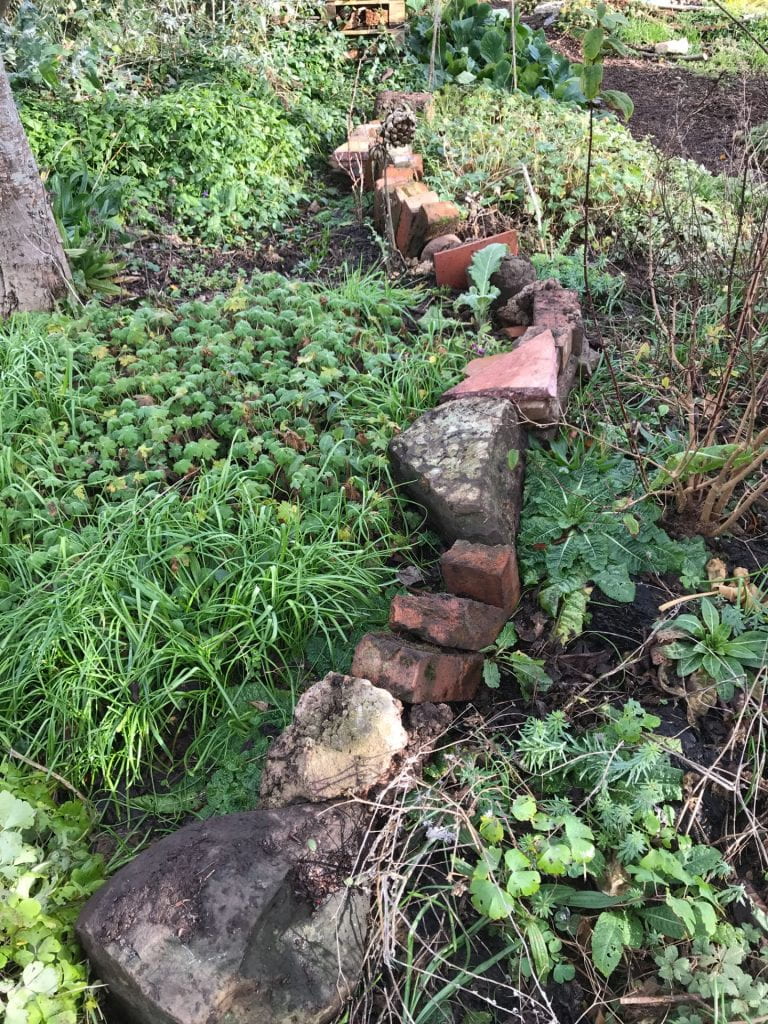
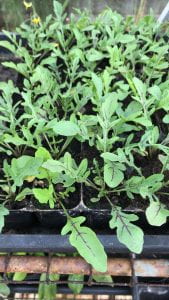

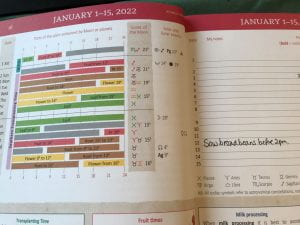 I have been dabbling with sowing seeds according to the moon phases – biodynamic gardening – but usually lose the plot in April when there is so much to do. This year I have bought the Maria Thun diary so that I can know exactly when to sow the seeds. Does it work? I don’t know but in soil like mine you need every little bit of help you can get. I have looked at my spreadsheet of plants that I want to grow and written into the diary when I should sow them.
I have been dabbling with sowing seeds according to the moon phases – biodynamic gardening – but usually lose the plot in April when there is so much to do. This year I have bought the Maria Thun diary so that I can know exactly when to sow the seeds. Does it work? I don’t know but in soil like mine you need every little bit of help you can get. I have looked at my spreadsheet of plants that I want to grow and written into the diary when I should sow them.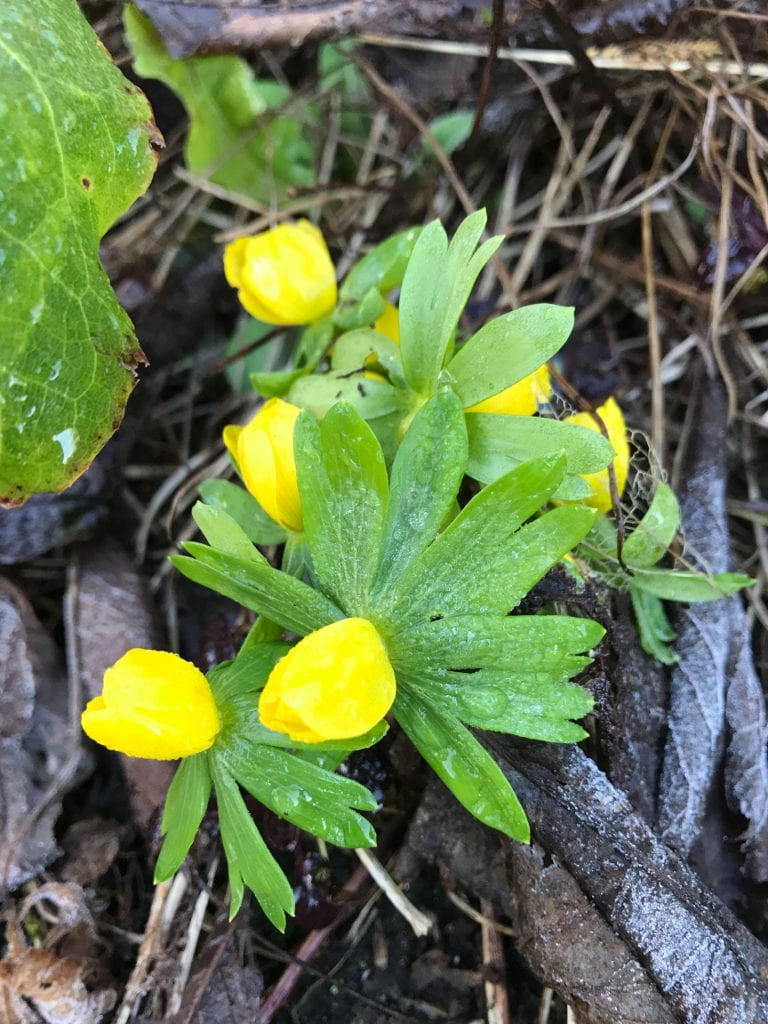
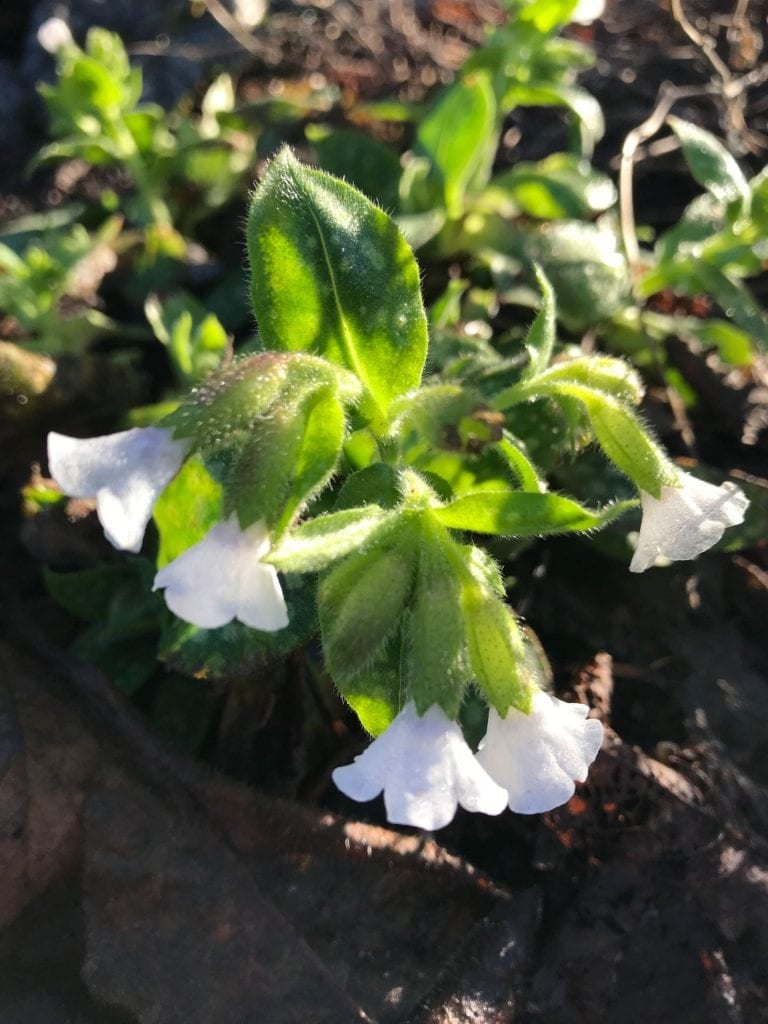
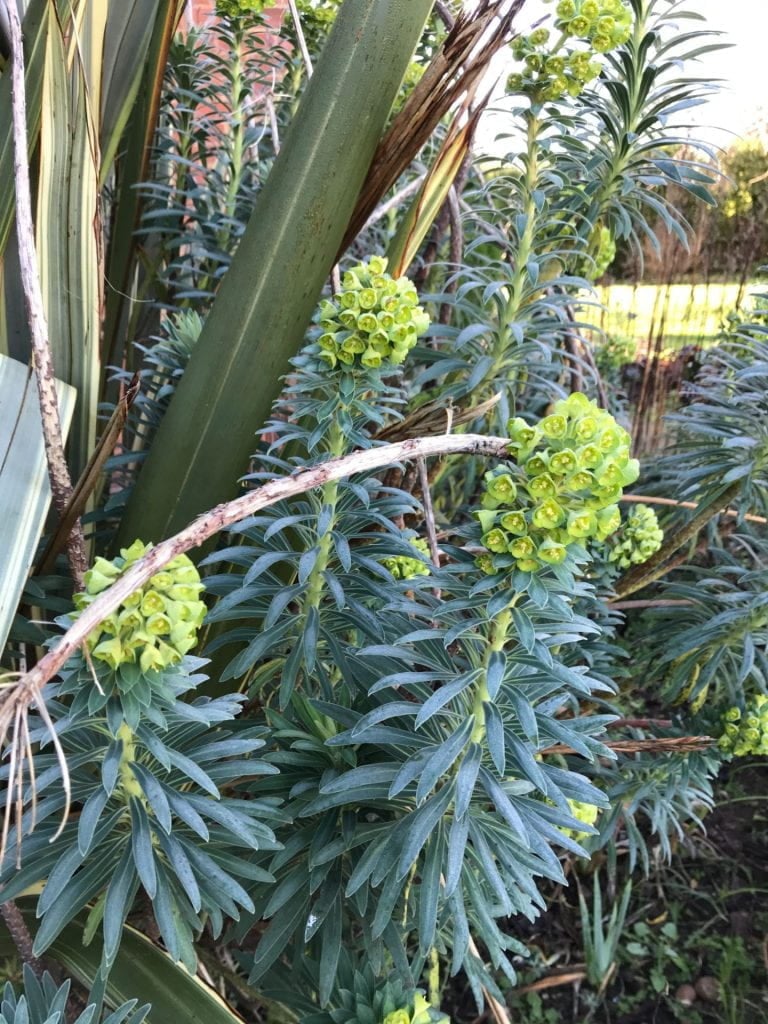
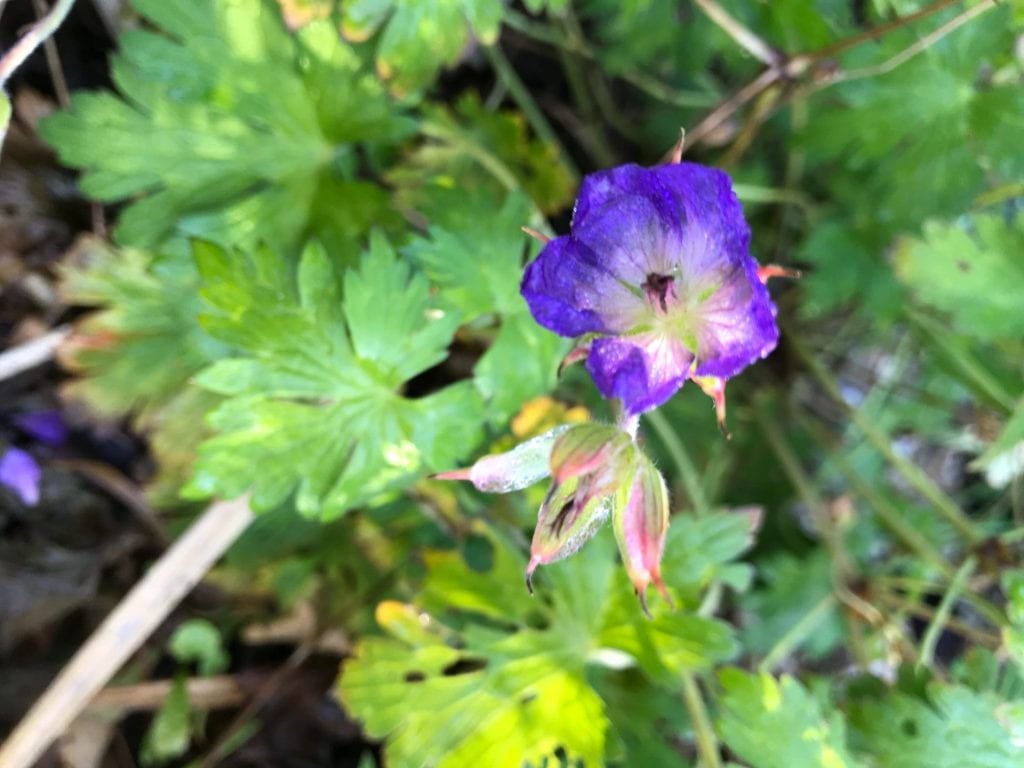
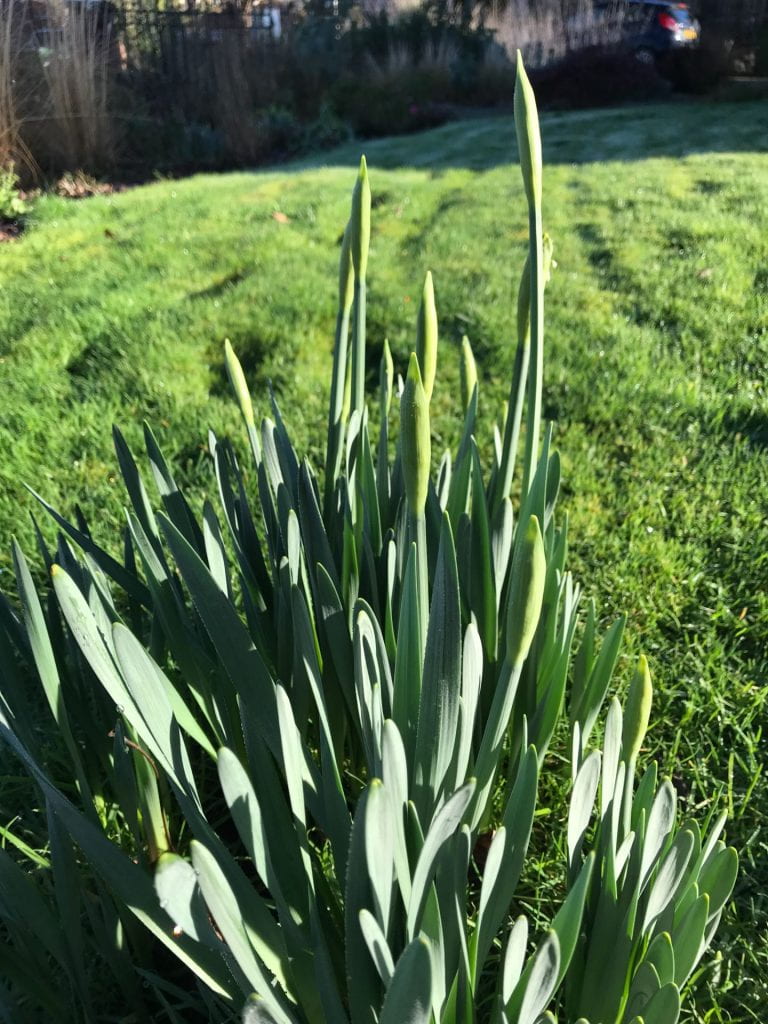

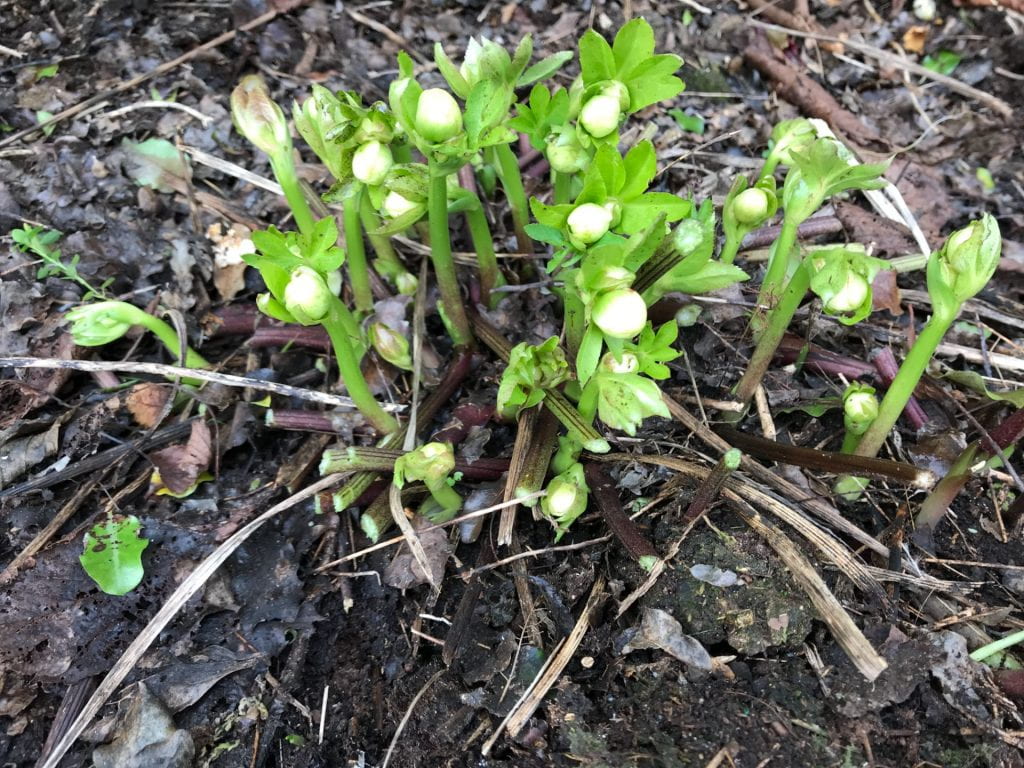 My first plant is the hellebore that my Mum collected seeds from in her local Sainsbury’s carpark. When we had to sell her house, I took a few of the plants from her garden and planted them in mine despite the fact that we had completely different soils. They took a little while to acclimatise but once they got going, they were off. I doubt that they are a fancy variety but they are important to me and they are almost here.
My first plant is the hellebore that my Mum collected seeds from in her local Sainsbury’s carpark. When we had to sell her house, I took a few of the plants from her garden and planted them in mine despite the fact that we had completely different soils. They took a little while to acclimatise but once they got going, they were off. I doubt that they are a fancy variety but they are important to me and they are almost here.



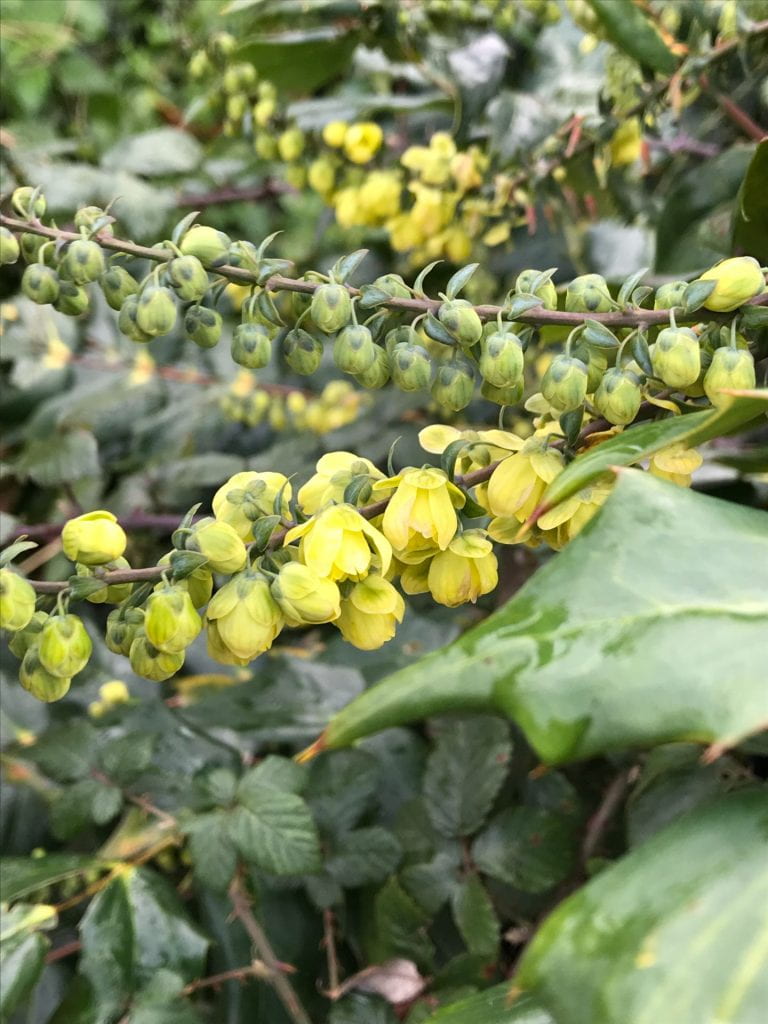
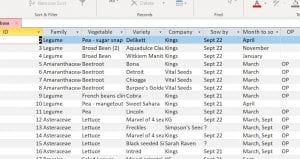
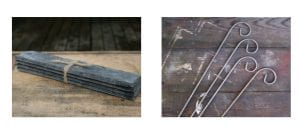 In order to support resolution number 1, I have bought some very fancy labels – metal hooks which you stick in the ground and slate labels that you hang from them. This was a present to myself and they will be used specifically for veg or flowers that I want to collect seed from. Even if the writing wears off, I will at least know which plants to collect seed from. All I need now is a marker to write on the slate – note to self! The whole system could come crashing down for want of such marker.
In order to support resolution number 1, I have bought some very fancy labels – metal hooks which you stick in the ground and slate labels that you hang from them. This was a present to myself and they will be used specifically for veg or flowers that I want to collect seed from. Even if the writing wears off, I will at least know which plants to collect seed from. All I need now is a marker to write on the slate – note to self! The whole system could come crashing down for want of such marker.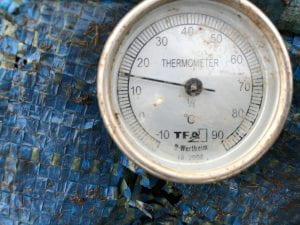

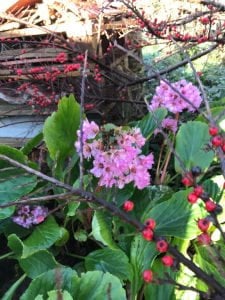
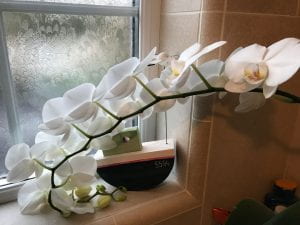 And finally, with no resolution attached to it is the orchid in my bathroom which has a very long stem of flowers this winter. I have learnt: feed it all spring and summer and it will flower all winter for you. Beautiful.
And finally, with no resolution attached to it is the orchid in my bathroom which has a very long stem of flowers this winter. I have learnt: feed it all spring and summer and it will flower all winter for you. Beautiful.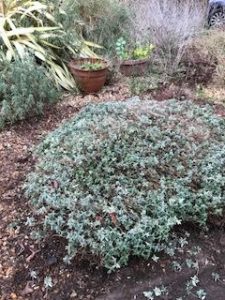
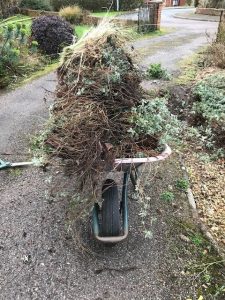 The first thing you find is that the local cats have been using the top of your much loved Helianthemum as a toilet. It is after all quite cold at the moment and who would want to put their little botty near the cold floor when there is a nice, cushion-shaped plant near by. So, you clear that up which is not easy and then continue.
The first thing you find is that the local cats have been using the top of your much loved Helianthemum as a toilet. It is after all quite cold at the moment and who would want to put their little botty near the cold floor when there is a nice, cushion-shaped plant near by. So, you clear that up which is not easy and then continue.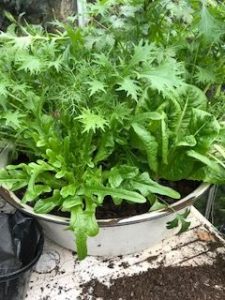 One thing I am very pleased with though is my bowl of salad in an unheated greenhouse. I planted the pot up in early November. I don’t keep records (but I might make it my New Year’s Resolution to do just that) so I am not quite sure when, but we have had a picking each week from it throughout December and now into January. I just pick the outer leaves, leaving the growing inner leaves and they seem to have replenished a week later. I will definitely be growing more of these pots next year. I found some old polystyrene boxes in a recent clear out of the garage and they would be fantastic being slightly insulated. In the pot there is Little Gem lettuce, Mustard – which seems to be taking over and needs more frequent picking – Catalogne lettuce (I think!), fennel and coriander. There have been several mornings when I have looked at them and they have been very droopy. It is quite cold after all, but they have all recovered as the greenhouse has warmed up. So, salad with tea tonight.
One thing I am very pleased with though is my bowl of salad in an unheated greenhouse. I planted the pot up in early November. I don’t keep records (but I might make it my New Year’s Resolution to do just that) so I am not quite sure when, but we have had a picking each week from it throughout December and now into January. I just pick the outer leaves, leaving the growing inner leaves and they seem to have replenished a week later. I will definitely be growing more of these pots next year. I found some old polystyrene boxes in a recent clear out of the garage and they would be fantastic being slightly insulated. In the pot there is Little Gem lettuce, Mustard – which seems to be taking over and needs more frequent picking – Catalogne lettuce (I think!), fennel and coriander. There have been several mornings when I have looked at them and they have been very droopy. It is quite cold after all, but they have all recovered as the greenhouse has warmed up. So, salad with tea tonight.